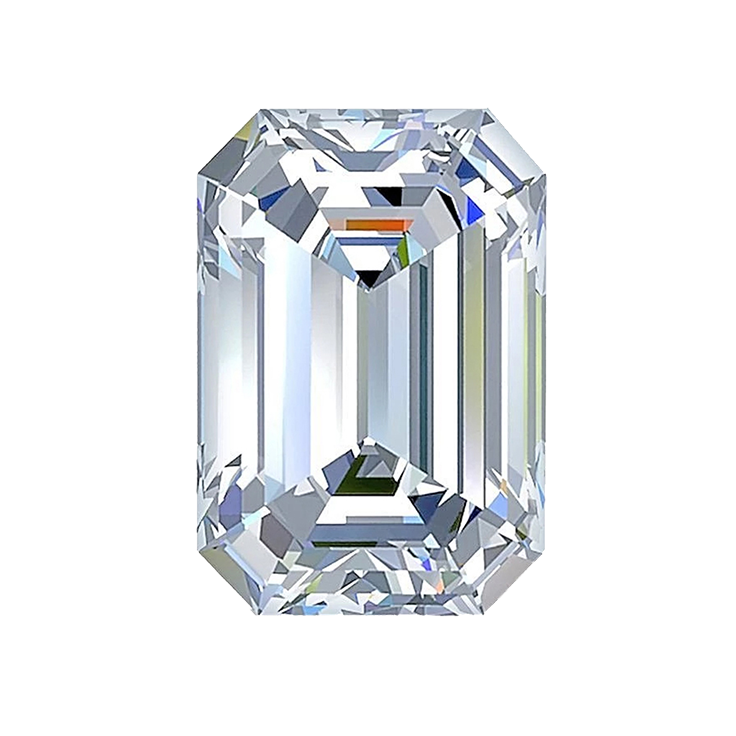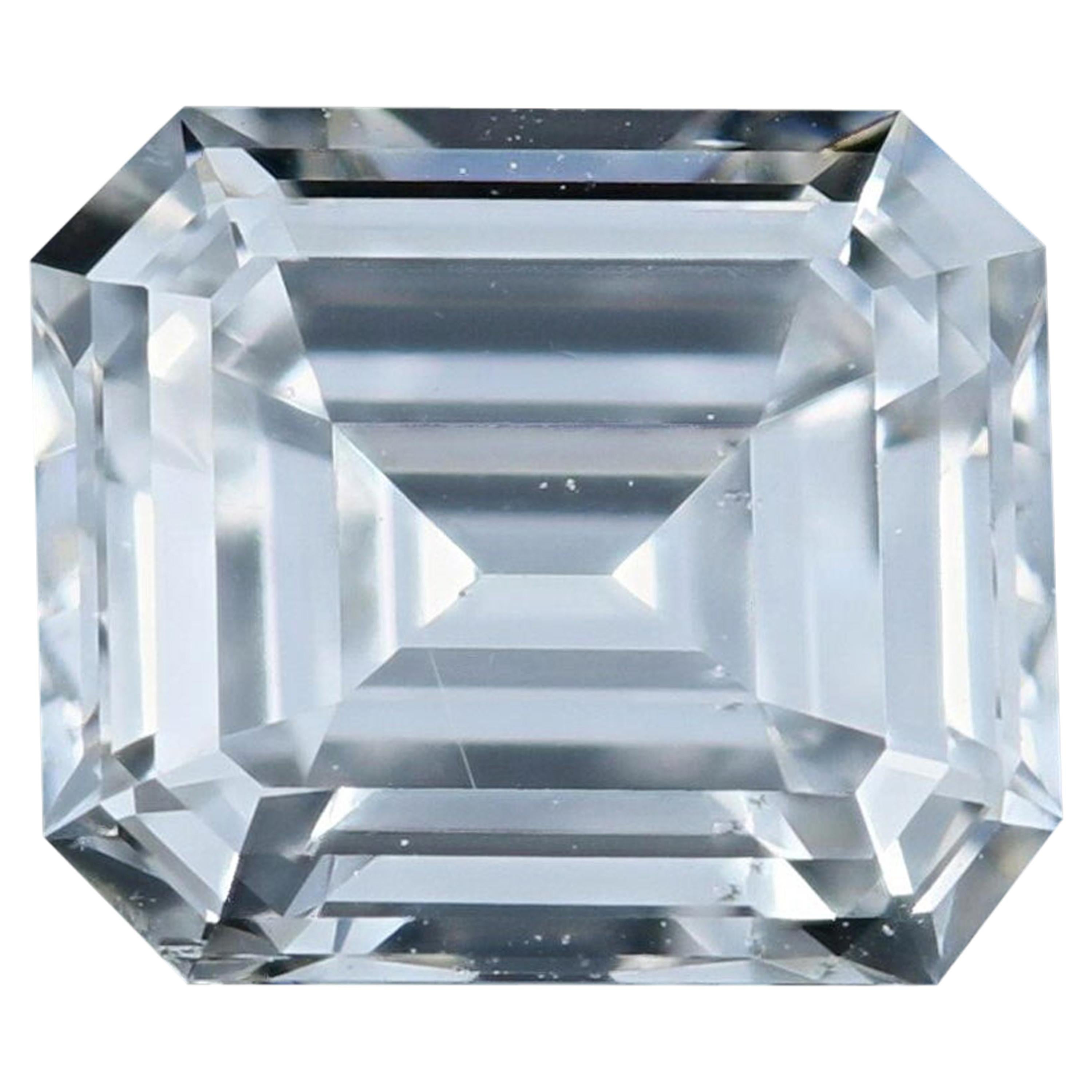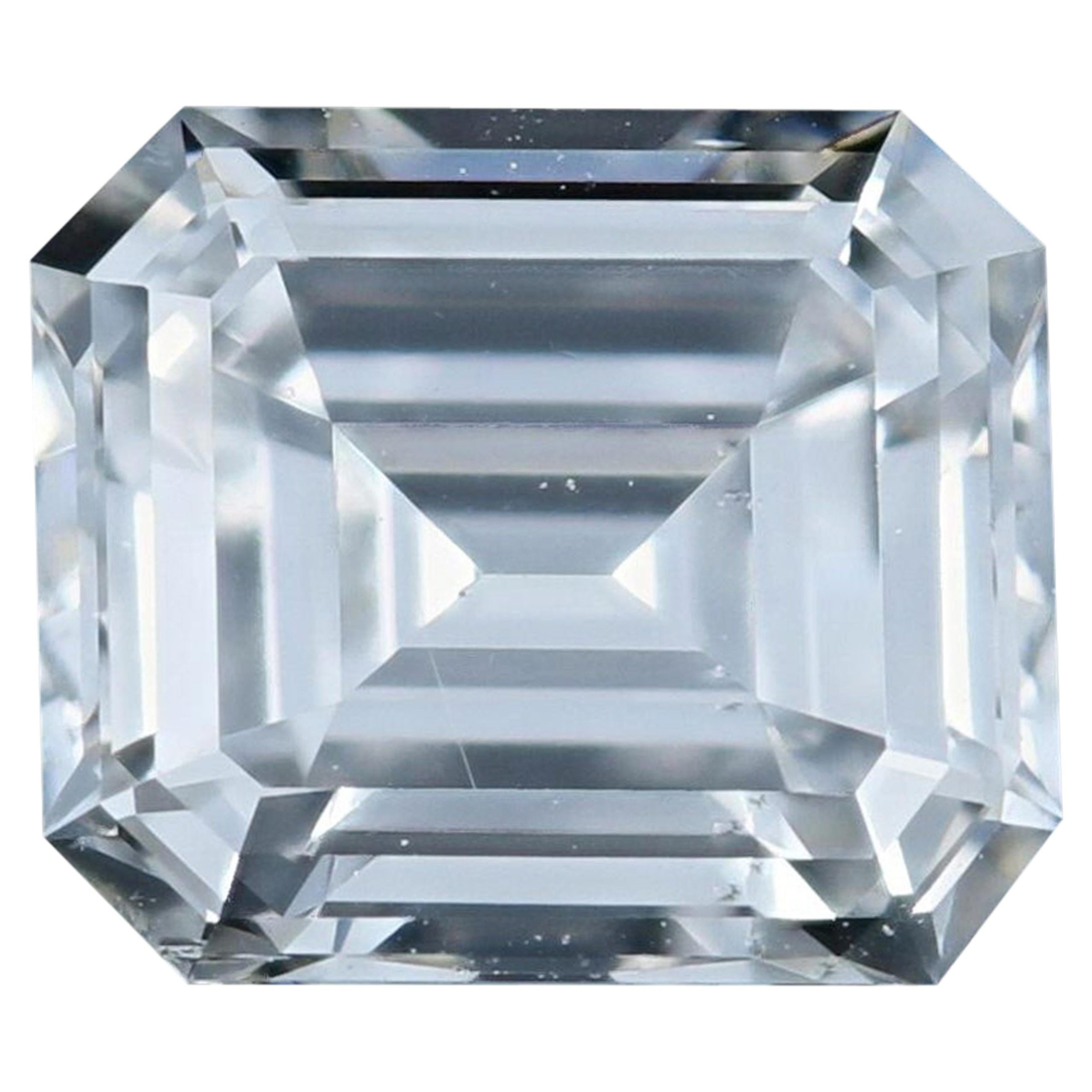Loose emerald cut diamonds immediately capture the eye with their striking geometric lines and understated brilliance, setting them apart from other diamond shapes. Their allure lies not only in their vintage-inspired step-cut facets but also in the versatility they offer for personalized jewelry design, making them a favorite among diamond connoisseurs and those seeking something truly unique.
With origins dating back to the Art Deco era, loose emerald cut diamonds have evolved to represent modern sophistication while retaining classic appeal. Their elongated shape and open table emphasize both clarity and color, providing a window-like view into the heart of the stone. Whether you’re considering them for a custom engagement ring or a statement pendant, these diamonds promise refined beauty and endless creative possibilities.
Introduction to Loose Emerald Cut Diamonds
Loose emerald cut diamonds are cherished for their elegant geometry and unmistakable sophistication. Characterized by their rectangular shape and cropped corners, these diamonds are typically sold unset, allowing buyers to select their own jewelry setting. The term “loose” simply means the diamond is not yet mounted, offering versatility for custom designs and personal preferences.
The emerald cut has a rich heritage, originating in the early 1500s with techniques first developed for cutting emerald gemstones. Over time, diamond cutters refined the process, introducing the step-cut faceting style that defines the emerald cut today. This unique method evolved during the Art Deco era of the 1920s, when geometric shapes and clean lines became especially popular, firmly establishing the emerald cut as an emblem of timeless style.
Compared to other cuts, the emerald cut’s broad, open table and long lines create a hall-of-mirrors effect, giving it a distinct, understated brilliance. Unlike the fiery sparkle of round brilliants, emerald cuts appeal to those who appreciate subtlety, clarity, and vintage-inspired glamour.
Unique Features of Emerald Cut Diamonds

The emerald cut stands out due to its step-cut faceting, which uses parallel, rectangular facets arranged in tiers. This design emphasizes clarity and luster rather than intense sparkle, resulting in a sleek, elegant appearance. The broader facets also make inclusions and color more visible, highlighting the importance of quality selection.
When it comes to proportions, emerald cut diamonds typically feature a length-to-width ratio ranging from 1.30 to 1.50, with the most classic look around 1.40. Their dimensions contribute to their elongated silhouette, which can make fingers appear longer and more slender.
| Length (mm) | Width (mm) | Depth (%) | Ratio |
|---|---|---|---|
| 7.0 | 5.0 | 65 | 1.40 |
| 8.5 | 6.0 | 63 | 1.42 |
| 9.0 | 6.5 | 66 | 1.38 |
In contrast to round or princess cuts, which maximize light return with brilliant faceting, emerald cuts offer a more subdued sparkle. Their elongated facets and clean lines exude class, making them a favorite for those who appreciate architectural beauty and vintage aesthetics.
Grading and Quality Factors: Loose Emerald Cut Diamonds
The Four Cs—Carat, Cut, Color, and Clarity—play a crucial role in evaluating emerald cut diamonds. Because the step-cut design exposes the diamond’s interior, clarity and color are particularly important. Inclusions are more noticeable, and even slight tints can become visible.
Cut quality affects both the brilliance and the overall appearance. Emerald cut diamonds do not have a universally accepted cut grade, so buyers must closely evaluate proportions and symmetry. Carat weight often appears larger in emerald cuts due to their larger table surface.
- Feather: Thin, white lines or cracks, often along the step facets.
- Crystal: Small mineral crystals trapped inside the diamond.
- Needle: Long, thin inclusions visible under magnification.
- Cloud: Groups of tiny inclusions that may appear like a soft patch.
Table and depth percentages are vital. An ideal table ranges from 61–69%, while ideal depth is 61–67%. These measurements influence how the diamond reflects light and its overall appeal.
“Emerald cut diamonds require top clarity and color grades to truly shine, as their open facets make every detail visible.”
Benefits of Buying Loose Emerald Cut Diamonds
Purchasing loose emerald cut diamonds provides unmatched flexibility and value. With a loose stone, you can carefully inspect quality before committing to a setting, ensuring you get the best diamond for your budget and preferences.
Custom jewelry design becomes far more accessible when starting with a loose diamond. Here are some advantages:
- Freedom to choose your preferred ring or pendant setting.
- Ability to compare and assess the diamond from all angles before mounting.
- Opportunity to work with jewelers for personalized designs and modifications.
- More options to match your diamond with complementary accent stones.
In addition, buying loose often results in cost savings. You avoid premiums for branded or pre-set jewelry, and you can select from a broader range of stone qualities and sizes.
Selecting the Perfect Emerald Cut Diamond

Choosing an emerald cut diamond involves evaluating several key aspects. The length-to-width ratio will determine whether the stone looks more elongated or square, which should match both personal taste and the intended setting. Compatibility with your chosen setting is also vital to ensure security and visual appeal.
Below is a sample comparison table for common buying options:
| Carat | Clarity | Color Grade | Price Range (USD) |
|---|---|---|---|
| 1.00 | VS1 | G | $3,500–$4,800 |
| 1.50 | VVS2 | F | $7,200–$9,800 |
| 2.00 | SI1 | H | $9,000–$13,500 |
Before purchasing, carefully inspect the diamond in natural and artificial lighting. Look for any visible inclusions, especially near the center, and assess how the stone behaves as you tilt it. Always request a certification from a reputable lab and compare multiple stones when possible to find the best match for your style and budget.
Jewelry Settings That Complement Emerald Cut Diamonds

The architectural lines of emerald cut diamonds are beautifully enhanced by various jewelry settings. Choosing the right setting not only secures the stone but also showcases its unique features.
Popular design styles for emerald cuts include:
- Solitaire: Emphasizes the clean lines and symmetry of the diamond with minimal distraction.
- Halo: Surrounds the center stone with smaller diamonds, amplifying brilliance and presence.
- Vintage: Incorporates intricate metalwork and milgrain details for a timeless, antique look.
- Three-stone: Flanks the emerald cut with side stones, often baguettes or trilliants, for added drama.
The setting you choose can impact both the security and the overall visual appearance. A well-crafted setting protects the corners—often the most vulnerable part of an emerald cut—while also maximizing the diamond’s exposure to light.
Care and Maintenance for Loose Emerald Cut Diamonds
Proper care is essential to maintain the clarity and brilliance of your loose emerald cut diamond. Always handle with clean hands and use non-abrasive materials to prevent surface scratches.
To keep emerald cut diamonds looking their best:
- Store separately in a soft pouch or lined box to avoid contact with other gemstones.
- Handle gently, holding only the girdle to minimize fingerprints and smudges.
- Transport securely using a padded container, especially for travel or appraisal.
Regular maintenance includes gentle cleaning and periodic professional inspections. Here are some tips:
- Use a soft-bristle brush with warm, soapy water for cleaning.
- Avoid harsh chemicals or ultrasonic cleaners that could loosen settings in mounted pieces.
- Dry thoroughly with a lint-free cloth to prevent water spots on the broad table facet.
By following these practices, your loose emerald cut diamond will retain its radiant appearance and value for years to come.
Market Trends and Value Considerations, Loose emerald cut diamonds
Emerald cut diamonds have experienced a resurgence in popularity, with modern buyers drawn to their vintage appeal and distinctive style. Pricing trends show that, per carat, emerald cuts are often more affordable than round brilliants, making them an attractive option for larger stones.
Below is a sample price table for emerald cut diamonds based on carat size and quality:
| Carat | Clarity | Color | Approx. Price (USD) |
|---|---|---|---|
| 1.00 | VS2 | G | $4,000 |
| 1.50 | VVS1 | F | $8,500 |
| 2.00 | SI1 | H | $12,000 |
Resale value is strong when the diamond is of high clarity and color, especially with proper certification and provenance. Historically, emerald cut diamonds have shown steady value retention, with certain vintage or high-carat stones appreciating in the collector’s market.
Ethical and Sourcing Considerations
Ethical sourcing is increasingly important for loose emerald cut diamonds, with buyers seeking assurance that their purchase supports responsible practices. Transparency in origin and supply chain builds consumer trust and promotes sustainable practices.
Certifications and guarantees to look for include:
- GIA (Gemological Institute of America) certification for unbiased quality grading.
- Kimberley Process certification to ensure conflict-free sourcing.
- Supplier documentation on mine of origin and supply chain transparency.
- Membership in industry organizations promoting ethical standards.
The origin and journey of your diamond can impact its value and market appeal. Today’s conscientious buyers often seek stones with documented histories, enhancing confidence in both the ethical and material value of their diamond.
Descriptive Imagery and Visualization
A loose emerald cut diamond presents a captivating interplay of linear facets and flashes of light. Viewed from above, the broad, open table provides a window into the stone’s pristine clarity, with step facets cascading like terraces into the center. Its elongated silhouette glistens with every slight movement, reflecting crisp, white light from each mirrored facet along the pavilion.
Under sunlight, the emerald cut reveals flashes of brilliance at the facet edges, while the center glows with a soft, alluring luster. In dimmer lighting, the diamond takes on a sophisticated, almost mysterious gleam, emphasizing its architectural design. The contrast between light and shadow highlights each crisp step, adding depth and intrigue to the stone’s appearance.
When set in a platinum solitaire, the diamond’s color appears slightly cooler and the clean lines are accentuated, creating a modern, refined look. A yellow gold setting, on the other hand, imparts a warmer tone, subtly enhancing the body color of the stone. With a halo of smaller diamonds, the emerald cut’s brilliance is amplified, drawing the eye to its radiant, mirror-like table. Every setting transforms the perception of color, size, and brilliance, allowing you to tailor the overall effect to match your personal style.

